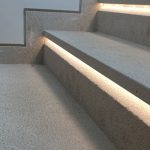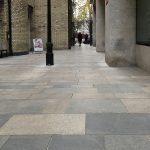Technical Stone Introduction and Quarrying Procedures

Technical Stone Introduction and Quarrying Procedures
Brief Stone Introduction
Rock refers to solid materials from the earth’s crust, which consists of one or more minerals that are linked together. In geology, rock is a natural and solid minerals accumulation or semi-minerals.
Rock is the material that makes up the solid outer earth layer (lithosphere). There are three types of rocks: igneous, sedimentary and metamorphic.
Petrology Science
The knowing rocks science is called petrology. All rocks main component is silica. The simpler stones parts are called minerals. Minerals are solid, natural, usually crystalline, inorganic, homogeneous substances with specific chemical compositions.
So far, more than 3000 minerals are known in nature, of which only about 24 minerals are abundant in the earth’s crust rocks, and they are called rock-forming minerals.
Stones and minerals are used in construction, industry, medicine, etc.
Defining Stone Cycle Concept
The rock cycle is a fundamental concept in geology that describes the transition through geological time scales among the three main rock types: sedimentary, metamorphic, and igneous.
Rocks, whatever they are, change when out of balance.
For example, an igneous rock such as basalt may decompose and dissolve when exposed to the atmosphere or melt under a continent as subduction result. Due to rock cycle driving forces, tectonic plate and water cycle, rocks do not remain in equilibrium and change when faced with new environments. Regarding the stone cycle, explaining how the stones types are related to each other and how processes change from one type to another over time. This cyclical aspect causes the rock to create a geological cycle and in life-bearing planets a biogeochemical cycle.
General Stone Properties
- Compressive, tensile, shear, bending resistance: Most stones have good resistance. For many uses, 35 MPa resistance is enough. For a few cases, shear strength is desired.
- Hardness and workability: The stone hardness affects It’s workability and hard stone is more expensive to prepare.
- Durability or reliability: stone durability (reliability) plays a role in its beauty.
- Color and vein: Some stones change color due to atmospheric factors or spots appear on their surface, and you should avoid using these stones.
- Porosity and texture: Porosity indicates the stone’s resistance to freezing and the water penetration containing corrosive substances, and the texture indicates the stone grains distribution and affects the workability and the stone price, because fine-grained stones can be cut better. On the other hand, the stone texture affects its beauty.
- Extraction ease from the quarry: Extraction ease is the first issue in judging its appropriateness for the building.
- Access: The stone proximity to the consumption place is also important. Access to the stone has a direct effect on its cost. Sometimes we have to carry stones from long distances.
Stone Quarrying Procedures
Quarrying Stone Blocks
Although quarrying is also done underground, using chamber and foundation techniques, in most cases, quarryng involves removing blocks from hillsides or creating an open-pit geometry.
The first step for the development of such quarries is to remove the trees vegetation cover and bushes under the trees.
In the next step, the excess overburden and subsoil are removed and stored for revitalization and improvement in the future. The stone is extracted in the mineral layers collection form or slices as thick as the desired blocks.
Unit Operation
There are different techniques to separate the stone mass from the main mass.
For many years, the primary technique was to use wire cutters, which consisted of a single, double, or triple-stranded helical (spring) steel wire about 6 mm (0.2 in) in diameter, in which sand, aluminum oxide, silicon carbide or other abrasive materials mixed with water were present.
When the wire is pulled over the surface, a groove or channel is worn into the rock. Although the wire itself does not cut (it is done by the abrasive), but by doing this process, it causes wear so that the cut width is continuously reduced.
If the wire breaks before finishing the cutting process, it will be very difficult to start the work again. Therefore, the wire must be long enough to complete the cut.
In granite quarrying, a thumb rule is to use about 27 meters (about 89 feet) of wire for every square meter of cut rock (27 feet of wire per square foot). Completing a 6-meter cut by 9 meters (30 feet) requires approximately 1,450 meters (about 4,800 feet) of wire.
Stay with us on Niayesh Stone blog. To learn more about us, click here.
Send your price quotes directly to our WhatsApp through this Link: https://wa.link/ord5k8
Sources
Memarian H. (2008), “Engineering Geology and Geotechnics”, Tehran University, Publishing and Printing Institute, 954 pages.
Article
Natural Stone Applications
- 22 December 2022
Iranian Stones Introduction According to Source and Quarry
- 21 December 2022
Technical Stone Introduction and Quarrying Procedures
- 21 December 2022
Categories
- blog757
- news1
- Specialized articles756













